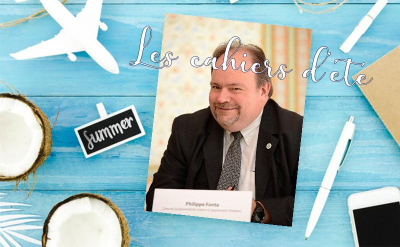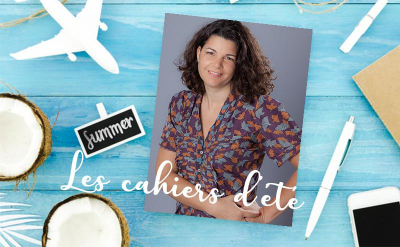News

A fast and easy round-trip to San Fransisco
"Take a short break with ENAC Alumni summer issue and discover articles from our previous mag"
“Park brake released, you may push back facing north. Block time 03.10”
As Paris is waking (it is 5 AM, 10 over there), we leave San Francisco as the sun is about to set. We have a flight of 9 hours and 35 minutes, accelerated to make up for the delay due to the "late arrival of the aircraft". I love this generic expression! It is summer. There are not only traffic jams on the motorways. There are also traffic jams in airports, at security checkpoints and in the air. We too were late 48 hours beforehand. It is not easy to explain to passengers, without boring them with a long speech, that when we reached the aircraft at CdG (if only the great Charles and his buddy John knew that we now call them CdG and JFK ! ), one hour before the planned departure, aircraft F-GSQF had only just been put into position because its parking position had been occupied by the Montréal flight. Also, as required by the US, we had to have a safety inspection, a careful check of the whole aircraft by ground personnel, with no other staff on board, to lift the cushions of each seat and check the position of the life jackets, the chair pockets, etc., which takes at least 30 minutes. Then there was cleaning: 30 minutes with extra staff. Then boarding: 45 minutes if all were to go well, with a full aircraft with "only" 332 passengers. In short, our initial departure set for 3.55 PM looked very compromised. The stopover had already pushed it back to 4.55 PM. Always the optimist, I negotiated a new time for 4.45 as, just maybe, with the expected tail winds, we should be 30 minutes ahead, which would therefore mean only a moderate delay of 20 minutes ! This would leave the stopover in San Francisco with room for manoeuvre, to try and make up time despite a minimum transit time of 125 minutes, which is eaten into from the first minute of delay, as the expected stopover time (EST) is the minimum transit time ! This almost worked. Passengers boarded at the (new) planned time, luggage was loaded, but then there was a glitch : a passenger disembarked. What a classic ! Why did he leave the plane ? Well, he was travelling with two other passengers who, due to the plane being full, could not board and he didn't want to be separated from them. Doh ! We had to reopen the holds, remove the luggage containers, find THE luggage to be offloaded, RE-fill the container then RE-load the containers. A 20-minute delay would not be possible now. After the glitch, we had to deal with the cherry on the cake : the takeoff slot ! Our planned time was 4.55 PM, but we were given authorisation to leave at 7.20 PM. Wow ! We had to wait, hoping it would surely improve ! Our time slot team had to try and curry favour, and we finally ended up leaving, at 5.21 PM, French time. Oh yes, I forgot to say : during this time, and these unexpected events, I used my lovely, calming voice to explain to the passengers that I was sorry but... I made the announcement in French and English, well two or three announcements (no, not 3-0, we were not in 1998). This quickly turned to four or five : some days are luckier than others for the chatterboxes among us ! Then a miracle happened : the doors closed and we could leave. AT LAST ! We left. With a sigh of relief !

Pilots all feel the same - difficulties mainly occur on the ground.
Obviously I am exaggerating. Leaving for Africa or South America with the ITF (sorry, the intertropical convergence zone) to be crossed is not a gentle stroll ! However, at least in the air, we can really do our jobs. Once we leave, you have to manage the planned scenario with the chosen fuel, plan for contingencies and always have a plan B. Just like in the board game we play in France, Mille bornes : “counter thrust, counter thrust !" AT LAST we were alone, with the ocean, Iceland, Greenland then the Great Canadian North before us. We were awarded in the end ! There were some storms over the Rockies, at the border between Canada and the US, and avoidance had to be negotiated between Winnipeg/Edmonton and Salt Lake. The Cunimb had the bright idea to be right above WLLES, at the 3 FIR junction point.
The bay of San Francisco was not very clear upon arrival. The clouds touched upon the coastal hills and rose, allowing the Twin Peaks antennas to emerge, then descended and dissolved into the bay (the Foehn effect for dummies), or swallowed the Golden Gate passage, hiding it from view. We could, however, see Sausalito and Tiburon, Angel Island, Alcatraz, Bay bridge and our airport in the distance. A magical moment. However, we still needed to concentrate on the approach. This is always from quite high and often short and sharp, just like the reading speed of the air traffic controllers, who could do with revising the ICAO annex 10 recommendations on the recommended rate (Maintain an even rate of speech not exceeding 100 words per minute - yeah right ! ).
We arrived at 02.29Z, i.e. 1 hour and 4 minutes late on arrival after a 1 hour and 26 minute delay on departure : to the impossible no one is required !
Passengers disembarked, went through the security checks and collected their luggage. In the shuttle, we left at 8.30 PM local time and arrived at the hotel at around 9 PM. It was therefore 6 AM in Paris. I hit the sack. The young first officers had a beer and a hamburger. What it is to be young ! I don't like hamburgers anyway ! The next morning, the Transamerica tower had its head in the clouds. That would lift later, but the sun would stay hidden near the coast. I went on my usual bike ride : an easy route for a sporty person who knows the hills of San Francisco ! Market street, Duboce, Panhandle then Golden Gate Park, a gentle climb to Presidio Hill and its golf course via Lake Street and 5th avenue and back down towards the Golden Gate Bridge, still under the clouds. In Sausalito, I was in the sun once more and I remained there as I went around Tiburon bay. Calm, alone, I advanced at my own pace. I savoured this moment of relaxation. In Tiburon, the ferry took me to the ferry building. Then I had a short trip along the docks to China Basin, then around Mission Creek and its floating houses, just like the ones you see in Sausalito. The day of the Big One, will they still float or will a tsunami wipe them away ? The next morning, we learnt that we would also leave late, so we could go back to bed for 35 minutes. We would leave at 5.50 PM instead of 5.15 PM. I therefore worked out, that morning, that we would have to accelerate the flight, etc. And off we went again ! The flight was already being prepared in my mind. Another little morning ride to Crissy Field, an old aviation field at the foot of the Golden Gate Bridge (which didn't exist at the time) and I returned my trusty steed, which had spent the night in my room. Americans are pragmatic : this is your room, you can take the elevator with your bike and keep it in your room !
I had lunch then a nap before night (partially) fell again.
03.10 Z, we start off, with a 40 minute delay.
This will be an accelerated flight (Cost Index 250/Mach 0.85). We have two tonnes of fuel in addition to the TRIP FUEL. We made up 10 minutes and arrived on time, well almost ! The connections were made – woohoo ! The expected fuel at arrival was 8.5 tonnes. I wanted 8 tonnes, the first officers - just in case, wanted 9 - we met in the middle. For the B777/300 this enables a go-around and a landing with a reasonable amount of fuel, above the fateful 4 tonne FUEL LOW, which results in an NNC (Non Normal Check-list), a flap 20 landing that takes up the runway, etc. The weather is forecast as PROB 30 TEMPO – TSRA. Excuse the pun, but I feel that the weather forecasters are always under a dark cloud ! "It will be sunny, but then again maybe not". The flight was calm. Our delay enabled us to avoid the storms, which dissipated. Just as for the outbound journey, we were using ETOPS with Winnipeg, Gander and Shannon as support points.

The Great Canadian North is almost as welcoming as the ocean in an emergency.
We saved fuel without much effort : luck was on our side ! The landing was planned with 9 tonnes of fuel. Our colleagues would mock us : woah, they took too much ! Then... a small mark on the radar at Creuil started to take shape. The first officer suggested a deviation.
I hesitated :
"Ask the controllers if aircraft are flying over Creil."
"For now yes, no one is avoiding it".
Hmm. The red mark got darker... We would be the first to avoid it. Quickly, we had to warn the attendants : return to your seats and fasten your seatbelts. The red zone was becoming even bigger. I flew 15 Nm north of Creil, magenta echoes announced turbulence. A glance at the cockpit entrance CCTV : it's ok, their seat belts are fastened. I should have flown 20 Nm north : we were shaken, struck by lightning and hit by hail. We experienced it all ! Then suddenly, we came out and all was calm. We were guided towards 26R, the long runway. 26L was closed at the time due to renovation. This was for the best : the wind was moving clearly behind, which we liked. Being the first to avoid the area, we were monitored and went from third in line for the approach to first in line. We started the final approach at 26R. The wind was blowing. We could go up to 15 Kts tail wind. The supporting first officer quickly calculated on his iPad (what a smooth move) : we were going to make it. Clearly we were, with 3,600 metres of runway ! We approached with 10 Kts of tailwind – stable !
Should we land facing East ? Forget it ! If the approach is clear, a go around is compromised. In front of us is a black bar and a red radar screen. We prepare to take control : "For a go-around, this will be an immediate turn to the left".
"Ok, no current approaches at le Bourget".
I think deep down, "Aircraft approaching or not, we will turn to the left and so will the Le Bourget aircraft ! "
At the time of landing, the ND (Navigation Display) displayed a nice yellow triangle, with red curves right in front : WINDSHEAR. Yikes! It really was time to lad ! It was 14.26Z for an arrival time of 14.25Z. Not bad ! Taxiing was very short, we would have a delay of 5 minutes. Yesss ! We did it ! But then... “AF 085, turn left, I repeat left at Romeo, your parking position is occupied. You will have to wait in the de-icing area at UT4."
And then, at UT4, we turned off an engine. The storm was approaching. There was rain, gusts of wind, lightning, thunder, etc. In the event of a storm, with ground operations stopping, our wait would surely be longer. We turned off the second engine. We made a passenger announcement. Then, surprisingly, 5 or 10 minutes later we were given a new parking position. We restarted one engine and taxied in the rain. The nose landing gear make a bit of a splash - we could see it with the camera ! We arrived via the side of E28. Nobody was there to guide us. It was raining, the storm was howling. We called the ground staff : "Due to the storm, all ground operations are halted." We made a passenger announcement, called the main attendant. We finally parked at 15.15 (like the Battle of Marignano ! )Z. This was after 55 minutes "taxiing" and 800 kilos of fuel. If I had known, I would have stayed in my UT4 penalty box !

So for me, this is the job of an airline pilot.
A cool little flight, with no major difficulties. A nice destination, a relaxed stop over. Yet, lots of little issues that have to be resolved. I once had a return flight from Tokyo Haneda in a 777/200, where we were rerouted via Saint Petersburg having emptied 12 tonnes of fuel for a sick passenger (well he was 99 years old). We had to refuel ourselves, both fuel and engine oil. This is not routine. And we had to use the "captain's margin" to guarantee the return to Paris as the flight service time limit was clearly exceeded.
Then I had to stop at Lyon, returning from Pointe à Pitre in a 747/300, one snowy day in Paris, with a passenger on a stretcher who had to quickly be evacuated in Geneva. We left just in time. Abandoning our colleagues in an A340 who had also been rerouted from Cayenne... 2 of them. No captain's margin for them that day. They were stuck in Lyon.
Once again in San Francisco, but on a B744, a French passenger deported from the US arrived handcuffed with two escorts and I wasn't even really warned. I had been told about INADs, those passengers who leave on the plane that brought them, as they are not allowed to enter the destination country. Here, this was not really the case. He asked to speak to the French Consulate then agreed to take off for Paris but asked me to have his escorts stopped upon arrival. He never did arrive in Paris. He had a strange fainting fit, 25% serious and 75% faked according to doctors aboard, but we do not take that risk when flying over uninhabited regions. Upon a request from paramedics, we therefore visited Salt Lake City (having emptied 54 tonnes of fuel) and the same thing happened : once we were on the ground, our problems commenced. This time, we left with a minor technical issue. However, we had to find a mechanic qualified for a B744 to perform the mandatory maintenance procedure prior to each departure. Now the Delta mechanic was qualified for the B767 ! We always find a solution with the “task AFRS” qualification.
Then there was the passenger who gave me a good telling off upon arrival in Rio because I had shaken them all night ! "It's simple : there are two routes to Brazil." I should have taken the other one !! If he said so. Amused, that day, I put down my bag, took out my iPad and explained aviation to him somewhat. We left as best buddies. Another passenger scared of flying. I didn't say it, he recognised it. Maybe he should go on holiday to Brittany next time.

I entered aviation because I wanted to fly, that's all.
Today, I have more the feeling of being in the human - like a manager trying to leave on time and arrive on time safely, cost-effectively and comfortably : a real struggle ! A flight is like giving birth : anything can happen and worsen very quickly. In the apron, with the passengers off the plane, you know the flight has gone well, not before. We are also like a family (I have 3 children), albeit an unusual one. This is not just for pilots, attendants feel the same way. On long-haul flights, which I have been flying for 26 years, we are night owls, always packing our bags. When my children were small, they summed up the situation well. "Mum is sleeping wherever she has gone." Yet I sense your burning question : being a woman in a world of men, what does that change ? Well, that is a big topic. Others have written books that could tell you more than I can. Yes, there are sometimes silly comments. Those who utter them have never grown up. Some of them have real mother issues. And we pay for it ! What can be done ? Let it slide. They are irrational, so there is nothing to say to them. Yes, sometimes subconsciously people are tougher on us than the dominant males around us. We all have this demanding aspect in our minds, at least the oldies like me. It is funny today to see my colleagues chide me for being so demanding : "Well, I shouldn't have been trained this way ! And who trained me, hey ? You might want to look in the mirror lads ! "
A final anecdote
A comment was made by a captain colleague that there was a higher failure rate amongst women being trained. These were objective figures, end of. But he made the comment and asked whether I had an explanation. I replied just one thing : "Maybe you are looking in the wrong place. Maybe you should look at the male instructors instead of the trainees."
Valérie Loevenbruck, EPL80, Captain on the B747/100/200/300/400 then the B777
"16,000 flight hours (not a lot for my age ! )"
Find the whole file "Pilot stories : the airplane as a passion, the sky as an office" in the Mag#23 of ENAC Alumni

















No comment
Log in to post comment. Log in.